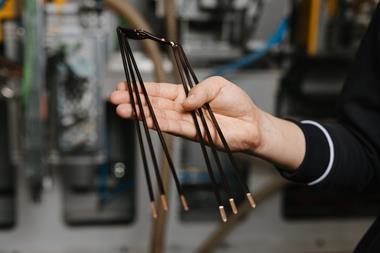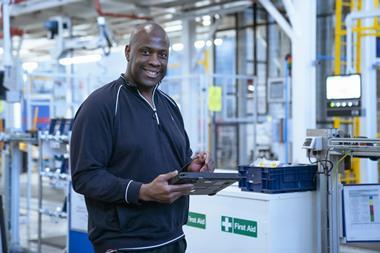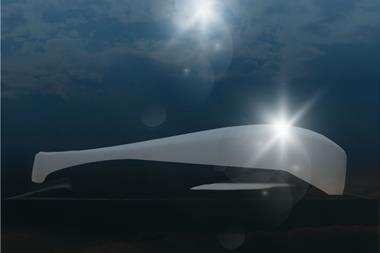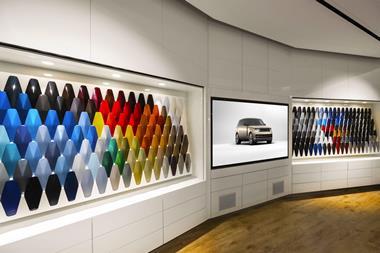
Validation tests of PROFIL’s earthing studs by OEMs operating in China have shown improved conductivity compared to the classical welding solutions
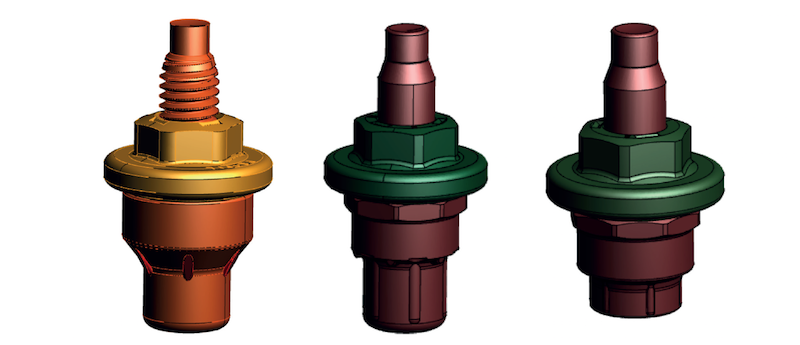 One of the clearest advantages of grounding studs is they are self-piercing. This means that each stud makes a neat hole through the sheet metal component. This technique provides a proper, clean metal contact between the stud and the sheet metal part. Furthermore, due to this specific riveting process, the connection point is rolled in. This characteristic means the connection point this protected against many external influences. As there is no sheet metal corrosion there is no reduction in conductivity.
One of the clearest advantages of grounding studs is they are self-piercing. This means that each stud makes a neat hole through the sheet metal component. This technique provides a proper, clean metal contact between the stud and the sheet metal part. Furthermore, due to this specific riveting process, the connection point is rolled in. This characteristic means the connection point this protected against many external influences. As there is no sheet metal corrosion there is no reduction in conductivity.
When the studs are installed and the sheet metal parts are all assembled into a body-in-white, the complete structure goes through the painting process. When the wiring cables are installed, the nut of the stud is disassembled, with a proper metallic contact face for cable shoes.

It’s a system applied and homologated by various OEM customers, including Mercedes-Benz, BMW, JLR and Porsche. PROFIL’s grounding studs solved the problem of grounding on the sandwich material as well as on the aluminium structures.
Another OEM uses the studs on the critical point around the fuel system. The OEM’s validation and corrosion tests are showing good conductivity compared to the classical welding solutions. There is especially an advantage with the increased use of lightweight materials, such as aluminium, where the instances of installing grounding studs by welding are increasing due to the more complex welding process of the aluminium.
The flange nut of these studs has a special design to avoid any paint bleed in between the nut and the stud. The nut has a full metal prevailing torque feature, which prevents the nut dismounting itself. It’s a necessary feature given the automatic installation process.The studs can be installed manually or by a fully automatic process. The various different systems are already developed and have proven their reliability for customers for a long period of time.
The studs can be supplied with different surface coatings. PROFIL recommends a galvanic coating, which provides optimal installation performance. However, the specification can be defined in liaison with OEMs to remain in keeping with the car makers’ own demands. PROFIL studs are already in place at some manufacturers in operating in China.
Pioneer processFounded in 1965, PROFIL develops nuts and studs that are fastened to metal-shaped parts by means of a riveting, piercing, or pressing process. The company is a system supplier with in-house design for automated feeding and installation equipment, which is customised to meet individual production requirements of customers. The company is a pioneer in mechanically joined fastener technology and has steadily continued its development over many decades.
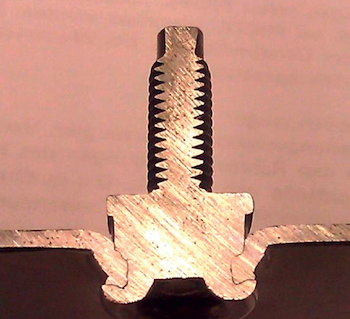 The self piercing element is designed to work well with the modern, lightweight, mixed material of the BIW
The self piercing element is designed to work well with the modern, lightweight, mixed material of the BIWThe economic advantages of using the PROFIL system in industrial manufacturing is documented by the implementation of a multitude of technically challenging and safety critical applications, mainly in the automotive, appliance and construction fittings industries. All major European and US automotive manufacturers and their suppliers are among PROFIL’s customers.
In China, local support for PROFIL’s technology is available through its parent company Penn Engineering’s presence in Kunshan, north of Shanghai.
PROFIL-earthing stud KSB0617A16A: objectives and specification
• Self piercing element for steel and aluminium for thin materials, specially made for modern light weight mixed material BIW• Also pre-pierced installation possible• Dismounting-torque between nut and bolt after riveting 8Nm max• Torque resistance of bolt >12Nm after installation• Robust manufacturing process in the production line• Reproducible conductivity / resistance after life time• Corrosion resistance that does not affect conductivity
TrendsToday’s automotive industry uses a patchwork of different metal technologies and non-metal components adapted for a variety of applications. The use of high-strength steel is increasing, sheet metal thickness has been reduced and the combination of metal and plastics is more commonplace.
OEMs are endeavouring to optimise different types of material for the best weight/cost relationship and crash test outcomes.Taking the door hinge as an example, vehicle designers are placing more functions into a fastener (centring, spacing, fixing, sealing functions etc). So while the prime function to fix one part to another is retained the quantity of special fasteners adapted to the extra tasks is increasing.
Meanwhile, OEMs are trying to reduce assembly times but not reducing the number of fixing points on a car. Instead they are decreasing the number of screwing points. This simplifies assembly and reduces interval times but it does not reduce the number of fasteners.In essence, OEMs don’t just have to consider a particular sheet metal part but the entire assembly operation and other sheet metal parts that might be affected.
PROFIL deals in a variety of distinct fastenings, offering options to customers, preferring to be viewed as partners, rather than merely suppliers.
In one example, developed a special type of fastener which became the basis for a new fastener family – a centring bolt for a Renault Megane sheet metal part. PROFIL also developed a hinge reinforcement, as a special fastener, for the Renault Scenic.
In an example from Mercedes-Benz, development centred on the reduction of engine noise in the A-class. A key element for noise reduction is the sheet metal firewall between the engine area and passenger compartment. Mercedes-Benz elected to use two 0.6mm sheets plus polymer filling material. PROFIL developed an earthing stud with a preassembled nut.
Once the nut is disassembled, the surface is open for the mounting of cable. The nut and the stud perform several functions: bridging the layers and creating a clean surface following the painting process.
A further instance saw PROFIL develop another special fastener for Mercedes-Benz, on the firewall, suitable to be grabbed by an assembly robot to subsequently position the sheet metal part accurately.
In Europe, has applications within Ferrari, Aston Martin, Lamborghini, Maserati, Bentley, Rolls Royce, Ford – in fact all other volume production cars in Europe carry PROFIL fasteners.





























